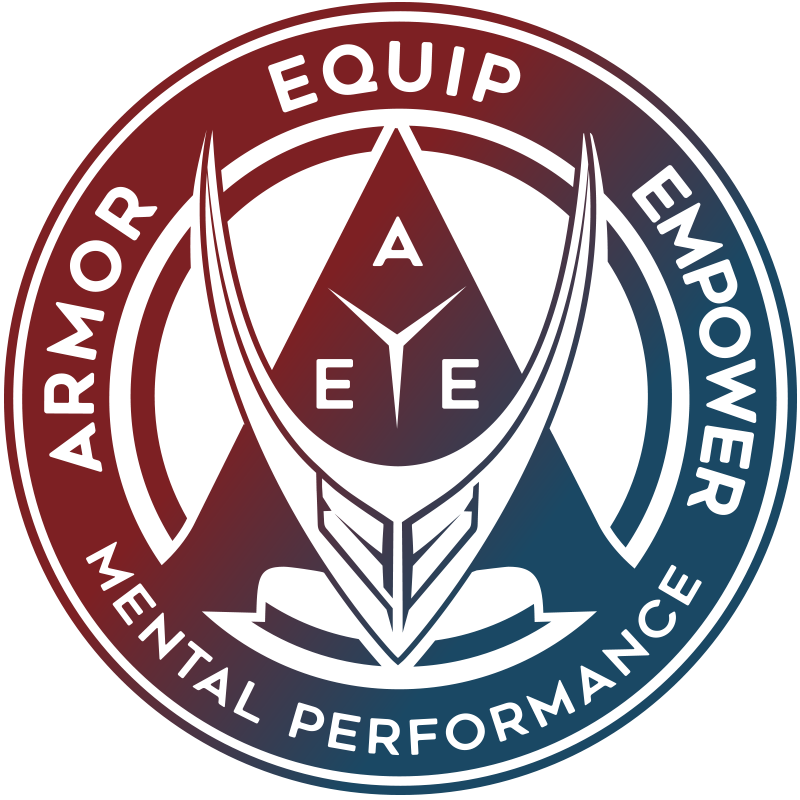What is stress?
Stress is the body’s reaction to any change that requires an adjustment or response. The body reacts to these changes with physical, mental, and emotional responses such as tension/chronic pain, irritation and frustration, or losing focus when it’s needed most. Stress is a normal part of life and some (eustress) is needed to achieve our Optimal Zone of Natural Excellence (OZONE). The other (distress) can be detrimental to our well-being, especially if poorly managed. In positions of leadership, stress can be exceptionally high. There are multiple demands placed on leaders, especially in high stress environments such as business, healthcare, emergency response, and athletics. These demands can include anything from providing consistent results within the performance domain to ensuring that subordinates underneath their leadership responsibilities have what they need to perform at their best when it matters.
According to an article from the American Psychological Association, leaders face pressure on a regular basis, and COVID-19 has intensified the stress surrounding them. Whether in business, non-profits, or government, leaders are juggling additional demands on their time, attention, and focus. Effective leaders learn to manage stress when making decisions and motivating others, but even the most effective leaders may feel emotionally and physically worn down during the pandemic. When leaders practice healthy stress management and self-care, they signal that it’s all right for others to do the same. And by doing so, an organization or community becomes healthier and better equipped to respond to challenging situations and manage future crises. Poor management of stress and low resilience can impact leader effectiveness in many ways including: decision making, control over the situation, isolation, sleep deprivation, and negative mood.
“To the victim, adversity is bad. To the Leader – And Warrior – hard times are life’s richest times of growth, opportunity and possibility.”
Robin Sharma – leadership expert, humanitarian, best selling author
We all experience stress, and to some extent we need to experience stress to reach our optimal level of performance. However, as if performing in a high stress environment isn’t stressful enough, being effective as a leader in a high stress environment can be even more volatile. Leadership IS stressful and leaders make impact. However, within the continuum of stress, too much stress or distress can compromise what we are attempting to accomplish, which a lot of times is successful and effective performance towards a desired outcome. When we don’t achieve that outcome we assume there is some poor performance related aspect or something outside of our control that caused this to be. We then react to this negatively and experience distress or an over activation of stress to regain control of the situation to achieve what we want next time. This can have significant impacts on those around us such as emotional instability, bad decisions, miscommunication, lack of cohesiveness, etc., especially if we are in positions of leadership or consider ourselves to be leaders in our respective sphere of influence.
However, anyone can be a leader at any moment and managing stress appropriately allows us to maintain resilience in the face of adversity, prevent burnout, and, most importantly, respond appropriately to the situation within our performance when it matters most. So how do we STRESS our resilience as leaders so that we are ready for the next stressful situation we will encounter? Let’s take a look at that below:
Stress your resilience as a leader
1) Self-awareness
STRESS-ing your resilience begins with self-awareness. As with much of what we do, awareness is key to implementing meaningful change that improves how we currently approach our performance. Check-in where you are mentally, emotionally, physically, and spiritually.
Additionally, awareness is critical to knowing where you are, in relation to the four pillars, at any given moment as well as the impact what state you are in, is having on your subordinates and those around you. A resilient foundation helps to promote this awareness. Self-awareness is best built and developed through mindfulness practice and precedes the implementation of self-regulation techniques. We discuss that more in depth in our blog on training self-regulation. Check-in with yourself physically, mentally, emotionally, and spiritually daily; Self-Awareness is the key.
2) Time to Process and Reflect
3) Regroup & Refocus
4) Engage with Others
5) Sense of Belonging
Creating a sense of belonging is an outcome of engaging appropriately to better manage stress collectively. Additionally, as leaders we want to foster a sense of belonging, and cohesiveness amongst our team. Contributing to a sense of belonging begins with “a leader” (specifically not “the leader”). That’s either leadership by position or by the subordinate who leads the change that is needed. Founded on the three concepts of safety, vulnerability, and purpose; a strong sense of belonging helps to increase our perceptions of social support, security, and solidarity in high stress situations where, based on a study by Cornell University, there is a sense of acceptance, inclusion, and identity for a member of a certain group. Safety, vulnerability, and purpose are built through communication where individuals build trust amongst each other, share risk and reciprocate the vulnerability that comes with that, and share stories that develop a common purpose. This happens through intentionally and meaningfully connecting and engaging with others. Therefore, in STRESSing your resilience, it is not only important to evaluate how we are contributing to creating a sense of belonging within our organization and families, but also how we are responding to the sense of belonging that we perceive exists. To learn how to strengthen the sense of belonging in yourself and/or within your environment, contact us or check out Daniel’s Coyle book The Culture Code, where he breaks down the concept in a very practical applicable way through lenses of current successful organizations. You can also look at what gives people a sense of belonging at work the most in this linkedIn article.
6) Strengthen Your WHY
The final component of STRESSing your resilience; your WHY is a critical aspect to keeping you on track when stress throws you off. WHY is exceptionally important as leaders experience stressors from above and below. As we experience distress on a consistent basis and it goes unaddressed, we begin to lose sight of why we do what we do. This significantly impacts how we respond to stressful situations (coping), how we recover from day to day, our mindset (fixed vs growth), our motivation, and how we interact with others collectively. As a result, we become more susceptible to burnout, ineffective leadership, other significant mental health issues, and can go as far as suicide.
Strengthening your WHY begins with identifying your values. Values help you know your WHY. Knowing your WHY promotes sustainable, long-term optimal motivation. Values lead you towards facing and overcoming challenges and obstacles. Values push you to leave the comfort zone and strive for progress that oftentimes requires vulnerability and accepting mistakes. Values, when followed by action, lead to personal meaning, fulfillment, and developing a personal philosophy. They contribute to your long-term self-worth as you develop yourself in relation to the world based on your authentic, meaningful visions – visions you share with your team as you inspire them to perform at their best.
.
How it Improves Performance and Effectiveness as a Leader?
What does every leader want? To lead effectively and to compel the team through inspiration to accomplish the tasks or mission properly and on time. How is this achieved? Simply put, the more resilient you are, the better you perform. But let’s break that down just a bit further. We like to approach resilience through the lens of four pillars – mental, physical, emotional, and spiritual. These four pillars are critical to anyone’s performance and the more aligned they are, the better we perform. This is extremely important when it comes to leading effectively. It is imperative to know where you are within those four pillars so that you also know what recovery methods are needed to bring those pillars where they need to be and optimize performance and effectiveness as a leader. I mentioned earlier that stress is needed to achieve our optimal zone of natural excellence (OZONE). Achieving your OZONE state means you are consistently performing at your best when it matters; however, if we don’t have enough stress or are experiencing too much stress and we don’t manage to maintain that zone appropriately. Our performance, then, in what we are doing and in how we are leading will inevitably suffer and this can have a negative impact on those around us as well.
Gaining and maintaining self-awareness is key to knowing where we are when we need to be at our best and it allows us to implement the proper self-regulation techniques to achieve our ready and resilient state both as a leader and performer. Taking time to process and reflect provides us the space as leaders and followers to respond accordingly to our team or whatever the task is in front of us. Self-awareness and taking time to process and reflect provide us with an objective perspective which allows us to regroup and refocus. Regrouping and refocusing are where some of our recovery efforts take place. We will cover recovery more in later blogs and you can also learn how to build effective recovery routines in our online burnout prevention training guide. Regrouping and refocusing allows us to re-engage (respond) appropriately which ultimately promotes performance flexibility. Engaging with others allows us to tap into our parasympathetic nervous system, slowing things down a bit. This allows us to get our stress level where it needs to be and put us closer to our OZONE state. Engaging with others effectively also contributes to fostering a Sense of Belonging within our team. A strong sense of belonging fosters a cohesive environment that is productive, proactive, and consistently efficient. Lastly, strengthening your why helps to develop your personal philosophy. This personal philosophy is what you lean on in times of greatest stress as you move towards the threat and lead others in the face of adversity.
All of these elements work together to ultimately optimize your performance, especially as a leader, when the stress is high. Additionally these elements work to create and shape the right environment to make the best leadership decisions that positively impact the performance of your team to serve the community or customers. Positive impact instead of negative effect. Stressing resilience also has the benefit of helping to prevent burnout both individually and collectively. Being less close to burnout means we are closer to engagement and this engagement is both on the individual and collective level. Engaging is what leadership is about.
How are you stressing your resilience to be the best leader you can be? If you see there is room for improvement, where is it?
.

